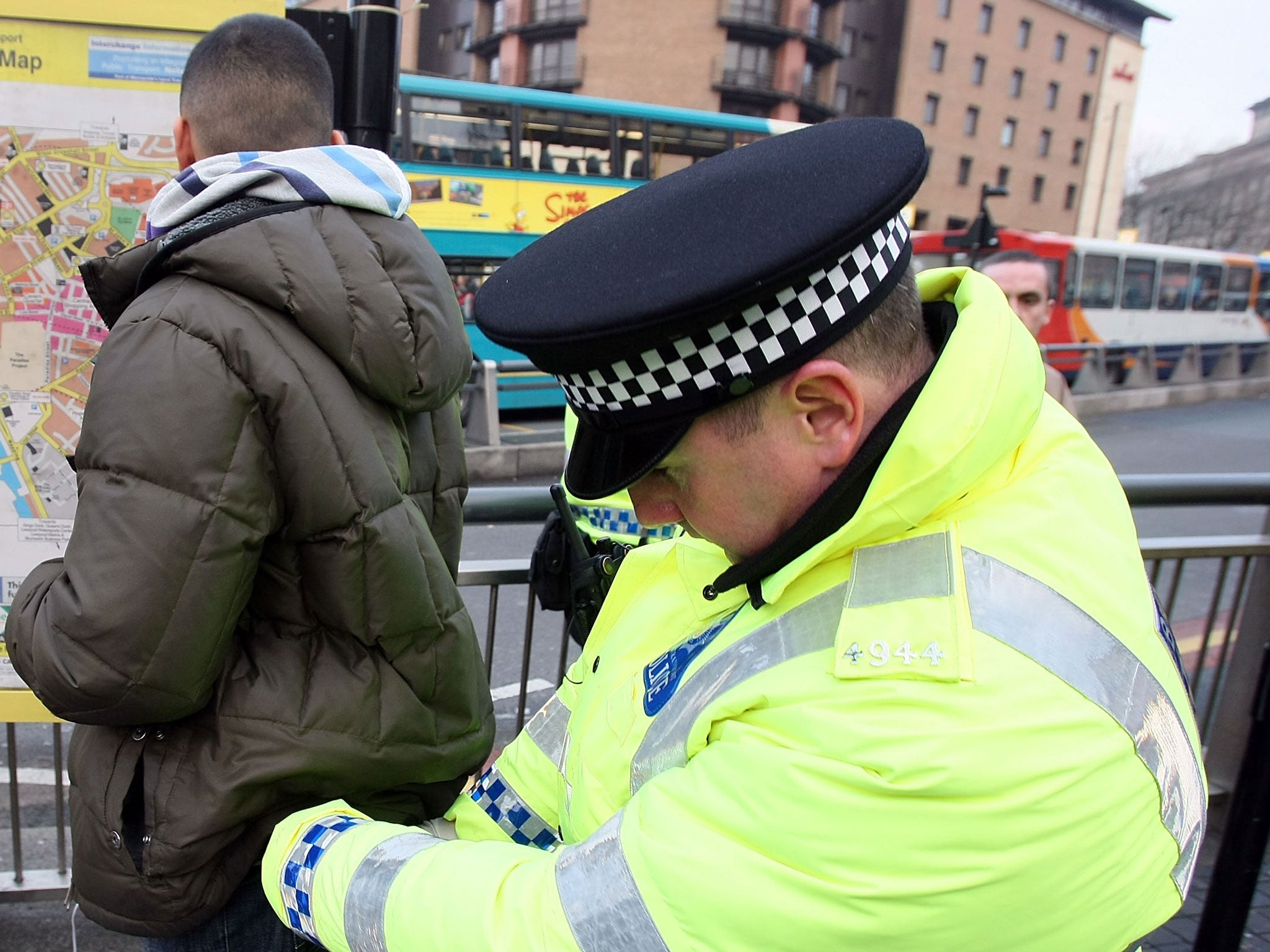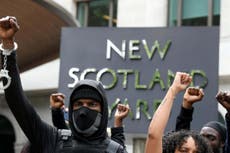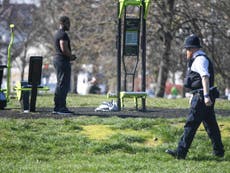Police five times more likely to use force against black people than white people in England and Wales
Statistics revealed after police announce ‘plan of action’ to address racial disproportionality

Your support helps us to tell the story
From reproductive rights to climate change to Big Tech, The Independent is on the ground when the story is developing. Whether it's investigating the financials of Elon Musk's pro-Trump PAC or producing our latest documentary, 'The A Word', which shines a light on the American women fighting for reproductive rights, we know how important it is to parse out the facts from the messaging.
At such a critical moment in US history, we need reporters on the ground. Your donation allows us to keep sending journalists to speak to both sides of the story.
The Independent is trusted by Americans across the entire political spectrum. And unlike many other quality news outlets, we choose not to lock Americans out of our reporting and analysis with paywalls. We believe quality journalism should be available to everyone, paid for by those who can afford it.
Your support makes all the difference.Police use force against black people five times more frequently than against white people in England and Wales, new figures show.
A Home Office document said black people were “involved in proportionally more incidents” where police used guns and Tasers, as well as batons and ground restraint in the year to March.
The statistics were released six months after national police leaders announced a “plan of action” to address racial inequalities.
Concerns over use of force and the deaths of black people in police custody had been a focus of Black Lives Matter demonstrations over the summer.
“Use-of-force tactics, ranging from handcuffing and ground restraint, to the use of batons, Tasers and firearms, involved people perceived as being from a black ethnic group at a rate five times higher than people perceived as being from a white ethnic group in English and Welsh police force areas, excluding the Metropolitan Police,” the report said.
“The rate was almost three times higher for people perceived as being from an “other” ethnic group and lower for those perceived as being from an Asian ethnic group.”
The report added: “People perceived as being from a black ethnic group were involved in proportionally more incidents involving the use of less lethal weapons (Tasers or baton rounds) and firearms.”
Figures for the Metropolitan Police were calculated separately because the force, as the largest in Britain, has the highest number of incidents and covers a more diverse population.
Officers in London used force against black people four times more than against white people, one and a half times more for people perceived as being from an “other” ethnic group, and lower for those perceived as being Asian or mixed-race.
Black people were also seven times more likely to be involved in incidents involving Tasers than white people outside London, and five times more in London.
The statistics include incidents where Tasers are not discharged, but are drawn or pointed.
The rates were calculated using statistics from the 2011 census, which the Home Office said may be outdated, while different areas have different populations.
The National Police Chiefs' Council (NPCC) said black men were disproportionately more likely to be arrested or have altercations with the police overall, and that leaders were “trying to understand” reasons for the disparity.
It said the plan of action announced in June was being developed and that forces would be held accountable for making any changes.
The NPCC said an independent review into disproportionate effects of Taser use had also been established, chaired by Junior Smart OBE.
Overall, about seven in 10 use of force incidents involved white people, 16 per cent black, 7 per cent Asian and 2 per cent mixed or other. No ethnicity information was recorded in 3 per cent of incidents.
The number of incidents rose by 64,000 in the year, to 492,000 recorded incidents in which a police officer used force, according to a Home Office report.
More than three-quarters of incidents were handcuffing, which is counted as a use of force in the UK, and the reason most commonly given by officers was to protect themselves.
Tasers were used in 32,000 incidents, increasing by 37 per cent on the previous year amid a national increase in the number available to officers.
They were not discharged in the vast majority of cases, but were fired at least 3,248 times.
The document said the increase in Taser use could be due to the increasing number of weapons available to officers, a rise in “incidents with the potential for conflict” and better recording.
Earlier this year, the police watchdog demanded greater scrutiny of Tasers and warned they were being used disproportionately against black men and mentally ill suspects.
The Independent Office for Police Conduct (IOPC) said transparency was needed following a government push to arm up to 10,000 more police officers with stun guns.
A coroner previously warned that “future deaths will occur unless action is taken” on Taser use after examining the death of 30-year-old father Marc Cole.
Of the total number of incidents, there were 10,711 where officers were injured as a result of an intentional assault. Some 256 of these were classed as “severe” injuries.
The Police Federation, which represents rank-and-file officers, said the increase in force must be seen in the context of “unacceptably high cases of violence against police officers” during the same period,
Its national vice-chair, Che Donald, added: “We must read these statistics in relation to the steady increase in assaults on officers.
"The statistics show that UK policing is one of the best trained and most restrained, using their expertise to protect themselves in an increasingly dangerous job.
“I make no apology for my colleagues doing the best they can to keep the public, themselves and colleagues safe.”
The NPCC lead for restraint said force was “rarely used” in the comparison with the number of officer interactions with the public.
“When it is necessary to use force – for example, when someone poses an immediate danger to others or themselves – it is used proportionately and lawfully,” said Deputy Assistant Commissioner Matt Twist.
“Most commonly, officers only use force to protect themselves from attack, which has been an increasing concern for chiefs in the last year as assaults against officers have increased.”





Join our commenting forum
Join thought-provoking conversations, follow other Independent readers and see their replies
Comments